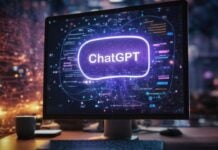Funny thing happened to me this week.
I attended the Enterprise 2.0 conference in San Francisco and an SCRM conference showed up.
It all started with the keynotes on day one:
- Tammy Erickson from nGenera delivered the opening address (she did a great job) talking about the differences between traditional enterprise and Enterprise 2.0: changes in society, people wanting to collaborate more and work together, using social tools to act on tasks and focus on the best way to achieve the expected outcomes. She discussed the necessary changes in leadership and mentality of the users, how it was no longer sufficient to just do something – it had to present a challenge, provide satisfaction for a job well done, and deliver an innovative solution. She did mention users and leaders as the antagonistic characters in this play (replace user with the word customer, leaders with the word company — and we have SCRM)
- Rob Tarkoff from Adobe said he was going to talk about — wait for it — Customer Interaction Solutions. I was slacked-jaw, speechless, and teary-eyed at the same time: can the good people of E2.0 really care about the customer? He did make a pretty good case for mashing up SCRM and E2.0 (of course, without calling it that) and very much aligned with what I have been trying to say with my darn, polemical pivot-point. His conclusion? Enterprise 2.0 is about serving customers better – not users working together better (good, controversial for the audience).
At this point I looked at the name of the conference inscribed in my badge to make sure I was in the right place. These are the issues we’ve been discussing: customer(user)-centricity, fulfilling and surpassing customer(user) expectations, using collaboration with customers(users) to accomplish the goals, and changes in leadership and mentality to adopt this evolution of the social customer(user).
Other sessions I attended (even if you don’t count two panels in the last day talking about how to do customer service better) all talked about the same issues but without mentioning customers. Apparently, Enterprise 2.0 is not done for customers’ benefit – just for internal users to work better together.
The Customer is the red-headed stepchild in the family — no one wants to talk about them, but you cannot ignore them either.
There was, however, a key difference: most of the conference was centered on tools and deployment, approached from an IT perspective. We talk about strategy, from the business stakeholders’ perspective.
This is the gap we need to cover. Convergence must be our new battle cry.
Issues are very similar, if not the same, and technology is the same, if not very similar. There are just two “thingies” to fix:
users versus consumers – we need to remove that invisible shield that separates IT and Customers. Customers are willing to work with us if we let them, and (most) users understand that it is about customers. The talking heads in the middle (yes, I am as guilty as the next one) are muddling an issue that should be very clear: one company, one solution.
strategy versus tactics – we need to get past this mental barrier about what it is that we need to do. It is not about buying a tool and deploying it – we tried that with regular CRM and failed. It is also not about crafting an awesome strategy and never implementing (ibid, CRM). It is about customers and users creating together solutions that focuses on what the customer needs and what the users wants to accomplish. Then, get it done. We must change the mindset to make things happen; we are all after the same holy grail: happy users and customers.
Were you there? What did I miss? What did I get wrong? Tell me how we can make it all work…
Related Posts – you must read Nenshad’s summary of the conference. He nails it.




Esteban, I’m glad you found some customer-related content at the E2.0 conference. Did they give you secret customer spy vision glasses at the door?
I didn’t attend the sessions you mentioned, but my impression is quite different. E2.0 is for employees, not customers, according to the vendors pitching the tools at the Expo.
Therefore my E2.0 recap is: Where is the Customer in Enterprise 2.0?
Take enterprise social technology and deploy it for employees and it’s called Enterprise 2.0. Use it for customer communities and it’s Social CRM. But isn’t the idea of a social/collaborative business to break down walls, not create new silos of automation?
I do think the best “social business” companies will figure out how to connect employees to customers and not get caught up in the tech marketing lingo. But for many others, I fear Enterprise 2.0 will end up being a cool collaborative tool slapped onto an unprepared organization, with little connection to how it delivers value to customers or the business. With CRM history fresh in our minds, we know how that ends.